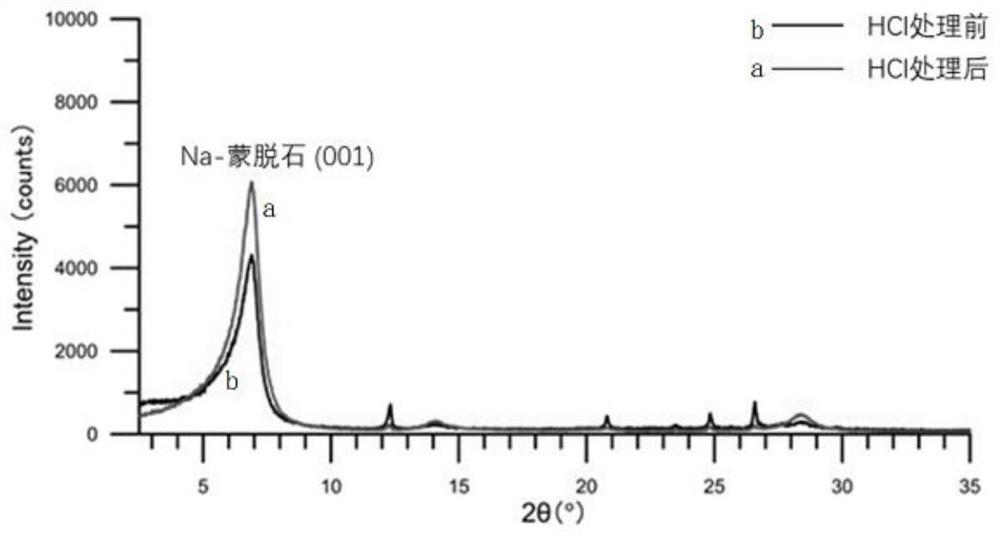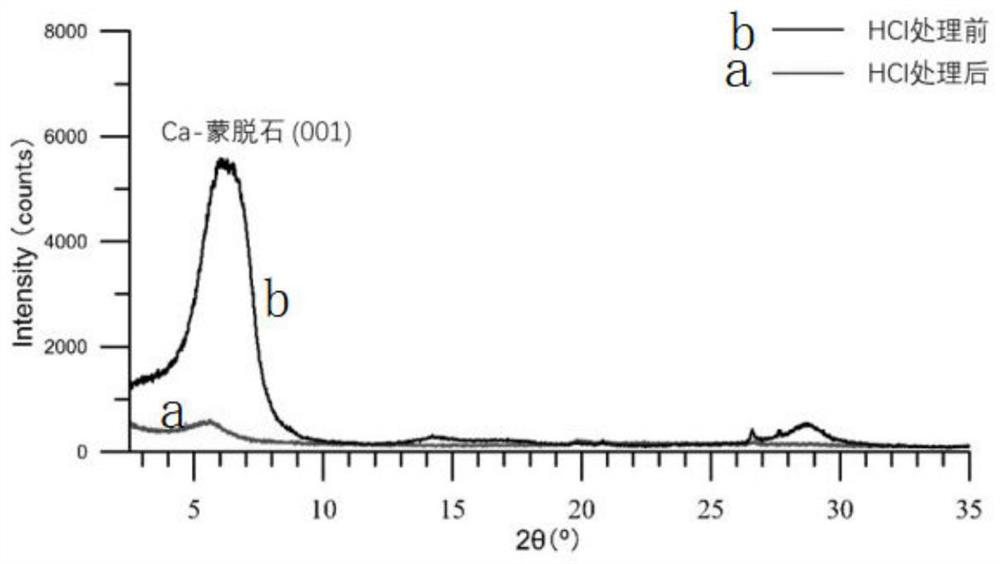A method and application for the differentiation and semi-quantitative analysis of different types of montmorillonite in geological samples
A technology for geological samples and quantitative analysis, applied in the fields of analyzing materials, using wave/particle radiation for material analysis, measuring devices, etc., can solve problems such as inability to effectively distinguish montmorillonite minerals, protect health and safety, and reduce the number of different samples. error, and the effect of improving the efficiency of experimental testing
- Summary
- Abstract
- Description
- Claims
- Application Information
AI Technical Summary
Problems solved by technology
Method used
Image
Examples
Embodiment 1
[0126] The method for distinguishing and quantitatively analyzing different types of montmorillonite in geological samples of the present invention is used to analyze loess samples in the Weinan area of Shaanxi, and the analysis process is as follows figure 1 As shown, the specific method is as follows:
[0127] (1) Enrichment and extraction of clay minerals from Weinan loess samples. The sample was crushed with a geological hammer to below 100 mesh, 10 g of the sample was weighed and 200 ml of deionized water was added. Add 20ml of 30% hydrogen peroxide and react for 12 hours to remove the organic cement, add 40ml of 1mol / L acetic acid reagent and react for 6 hours to remove the carbonate cement. Centrifuge the sample from which organic matter and carbonate cements have been removed by 3600r / min for 5min, remove the supernatant, add 450ml of deionized water, and repeatedly elute until the solution becomes neutral and deflocculation occurs. According to the Stocks sediment...
Embodiment 2
[0142] Adopt the method of distinguishing and semi-quantitatively analyzing different types of montmorillonite in geological samples of the present invention to analyze the Eocene gypsum rock sedimentary samples in Xining Basin, the specific methods are as follows:
[0143] (1) Enrichment and extraction of clay minerals from sedimentary strata samples in the Xining Basin. The gypsum mudstone sample was crushed with a geological hammer to below 100 mesh, 50g of the sample was weighed and 200ml of deionized water was added. Add 20ml of 30% hydrogen peroxide and react for 12h to remove the organic cement. Add 0.32mol / L disodium ethylenediaminetetraacetic acid solution, 1L, boil for 24 hours, remove gypsum minerals, and release its cemented fine-grained components. Add deionized water again and repeat centrifugation, centrifuge at 3600r / min for 10min, elute until the solution is neutral, and deflocculation occurs. According to the Stocks sedimentation rule, the clay component wi...
Embodiment 3
[0158] Adopt the method of the present invention to analyze the fluvial and lacustrine sediment samples of Zhaotong Basin, Yunnan, the specific method is as follows:
[0159] (1) Enrichment and extraction of clay minerals from fluvial-lacustrine sediment samples in the Zhaotong Basin. The sample was crushed with a geological hammer, and 20 g of the sample was weighed and 200 ml of deionized water was added. Add 50ml of 30% hydrogen peroxide and react for 12h to remove the organic cement, add 80ml of 1mol / L acetic acid reagent and react for 6h to remove the carbonate cement. Centrifuge the sample from which organic matter and carbonate cements have been removed, and centrifuge at 3600r / min for 5min to remove the supernatant, add 450ml of deionized water, and repeatedly elute with water until the solution is neutral and deflocculation occurs. According to the Stocks sedimentation rule, the clay component with particle size less than 2 μm was suspended and extracted.
[0160] (...
PUM
 Login to View More
Login to View More Abstract
Description
Claims
Application Information
 Login to View More
Login to View More - R&D
- Intellectual Property
- Life Sciences
- Materials
- Tech Scout
- Unparalleled Data Quality
- Higher Quality Content
- 60% Fewer Hallucinations
Browse by: Latest US Patents, China's latest patents, Technical Efficacy Thesaurus, Application Domain, Technology Topic, Popular Technical Reports.
© 2025 PatSnap. All rights reserved.Legal|Privacy policy|Modern Slavery Act Transparency Statement|Sitemap|About US| Contact US: help@patsnap.com



